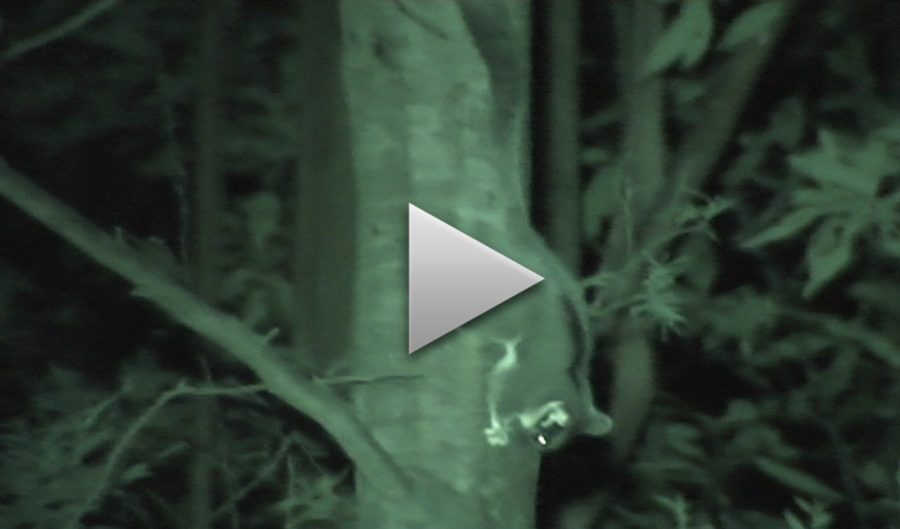VIDEO: Baby Leadbeater possum sighted

This rare footage filmed by volunteers from WOTCH – the Wildlife of the Central Highlands – shows an independent juvenile Leadbeater’s Possum feeding in the wild.
As well as tree sap and other exudates, Leadbeater’s live on small arthropods – like the insect being snapped up here by this youngster.
Leadbeater’s are considered an indicator species. Where they are present, it’s likely you’ll find mature forest nearby that can support other species too. Where Leadbeater’s numbers drop it can be a warning for the wider ecosystem.
The public who volunteer to survey for this species in Victoria’s forested Central Highlands hope that effective protection for the Leadbeater’s Possum will also help avoid the wider environmental implications of habitat loss.
Community volunteers have substantially boosted the survey effort for these species in the last couple of years. Groups like WOTCH have clocked thousands of nocturnal survey hours to pinpoint individuals through the Central Highlands. Where possums are caught on camera, a small localised reserve excludes the logging operations that are still active through the region.
The extra sightings that have resulted from the public’s combined efforts don’t diminsh the very real threats to the species.
Leadbeaters were listed as critically endangered in 2015 because of the vulnerability of their habitat, which faces three major threats – a steep decline in tree-hollows, future bush fires, and the continued logging of native forest. Those risks haven’t diminished.
The loss of hollows relates to a bushfire that swept the state 80 years ago, creating the ’39 regrowth’. This naturally-recovered bush is characterised by tall, straight poles – mountain ash at lower altitudes and alpine ash up higher – with an acacia midstory and an impenetrable understory. Often cool gullies will cut through, lined by intact rainforest. It’s an important ecosystem type in the Central Highlands, where islands of older forest are rare and isolated.
Single older trees that survived the fire have provided burnt-out hollows for wildlife over the last decades. But due to the uniform age of ‘39 regrowth, wildlife populations now face a precipice as these old stags collapse.
Human disturbance – including “salvage” logging after more recent bushfires – is disrupting the development of younger stags to take their place. There are at least thirty-nine vertebrate species that depend on finding hollows in old trees.
Leadbeater’s are often exposed to bushfire threat as their range is limited to a seventy-by-eighty-kilometre extent in the Highlands. In 2009, thirty-five percent of ash forest was lost. Resilience for this species against the unknown future course of major fires will need its distribution to be maximised.
Continued logging is a steady encroachment on suitable habitat. The ‘39 regrowth that’s been a lifeline to Highlands fauna is also preferred by loggers. Dispute over how to manage these areas has brought recent media attention to the shy possum.
But recent evidence shows more than a single species is at risk, and that wider trends are resulting from habitat loss through Victoria’s montane forests. The Greater Glider is the most recent species to have been added to the threatened species list, after a crash in its population right across the state.
Modelling undertaken in 2015 gives an indication of the eventual consequences of habitat loss. Using an international standard for assessing the sustainability of an ecosystem, the study predicts of a collapse of the Mountain Ash Forest ecosystem within fifty years. Under this IUCN Classification, the forest itself is Critically Endangered.
The work that the community puts in to conserve the Leadbeater’s is an important step for avoiding ecosystem changes that would have much wider implications for Victoria’s environment.

